

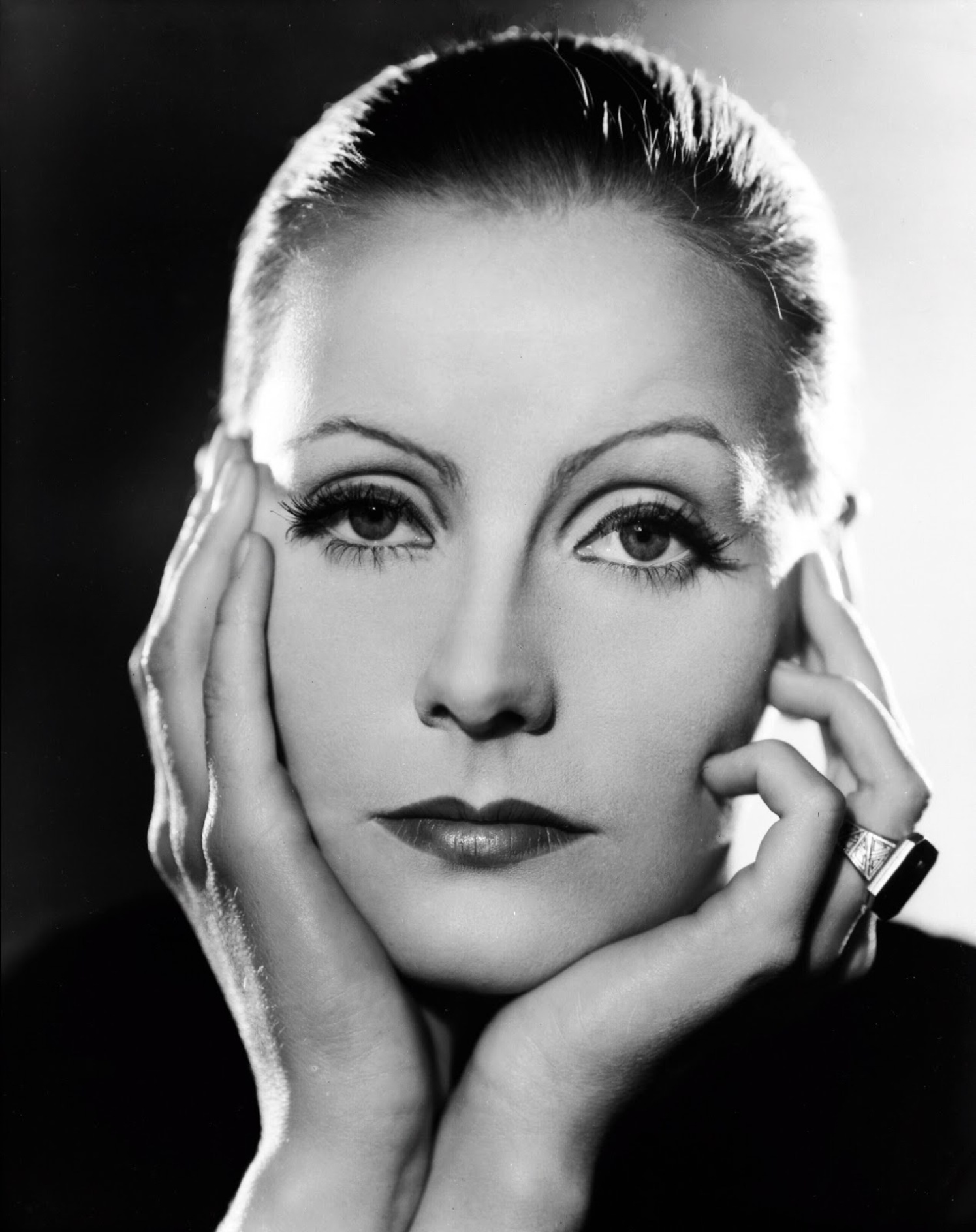



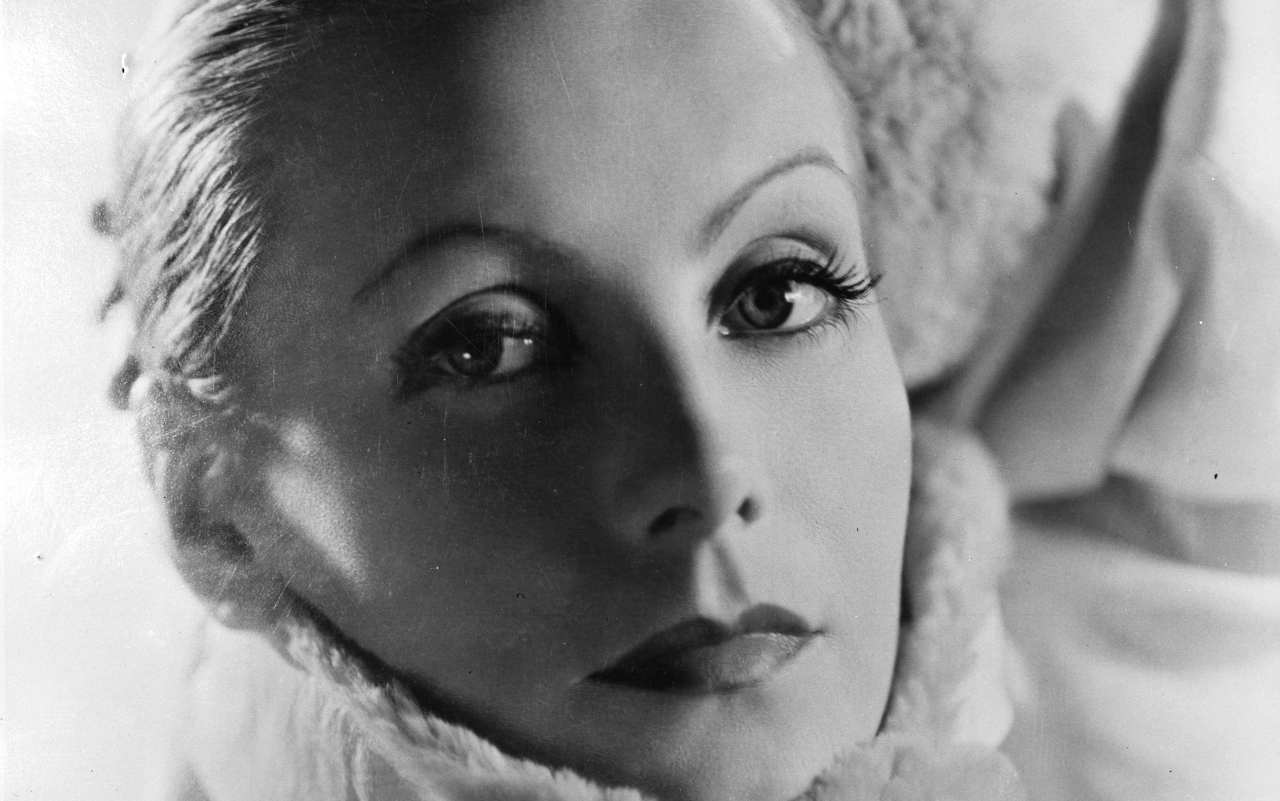
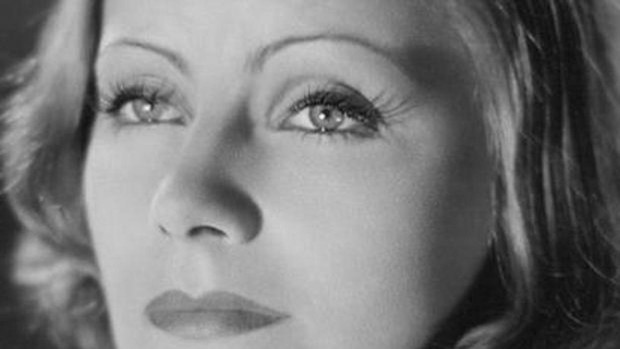
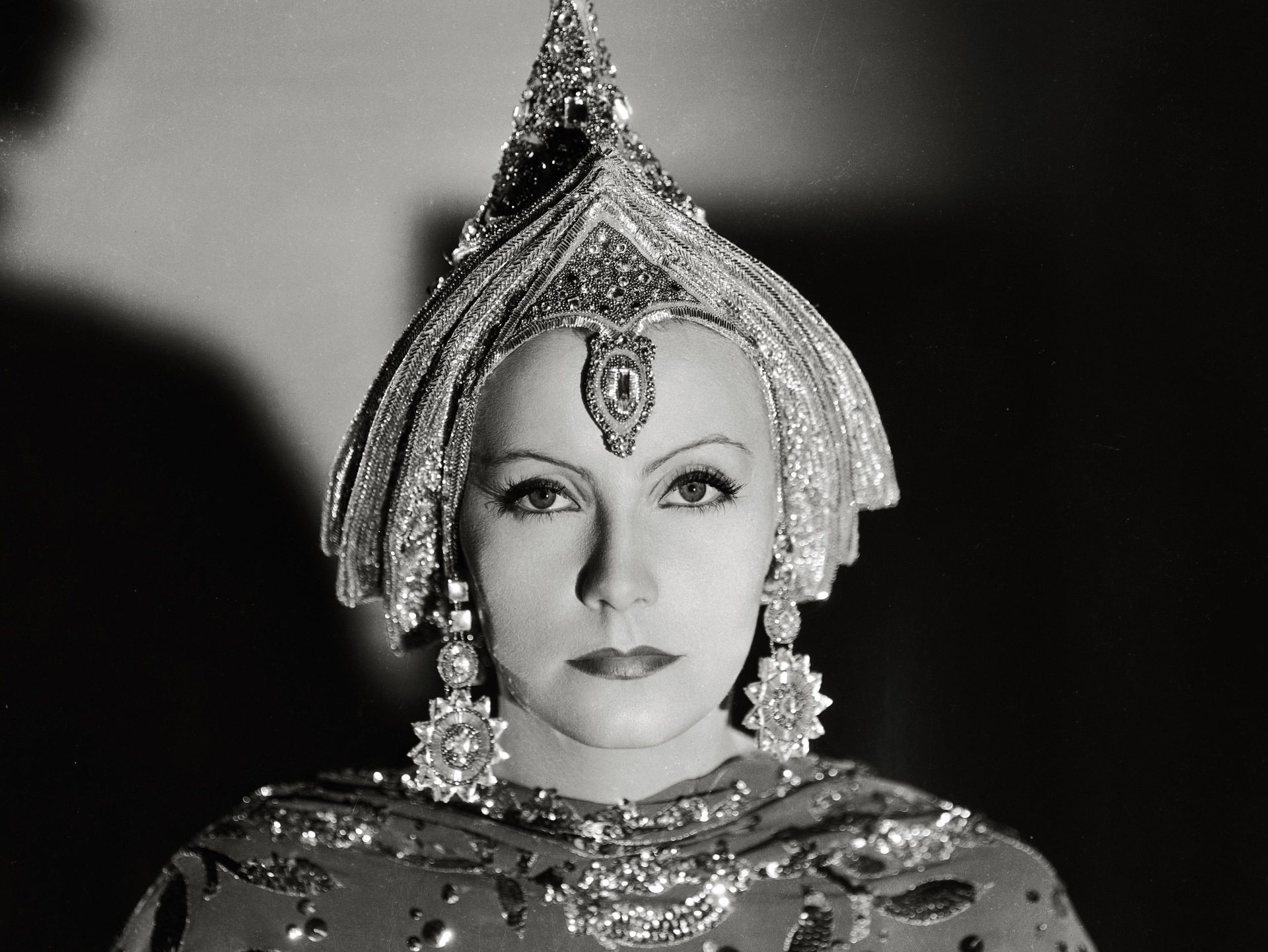




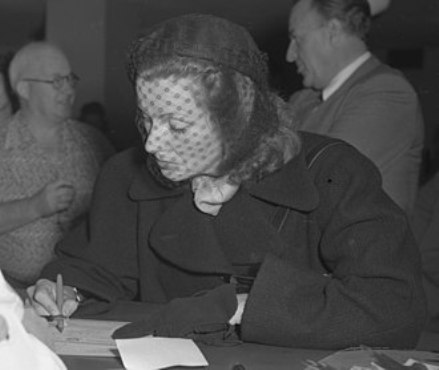
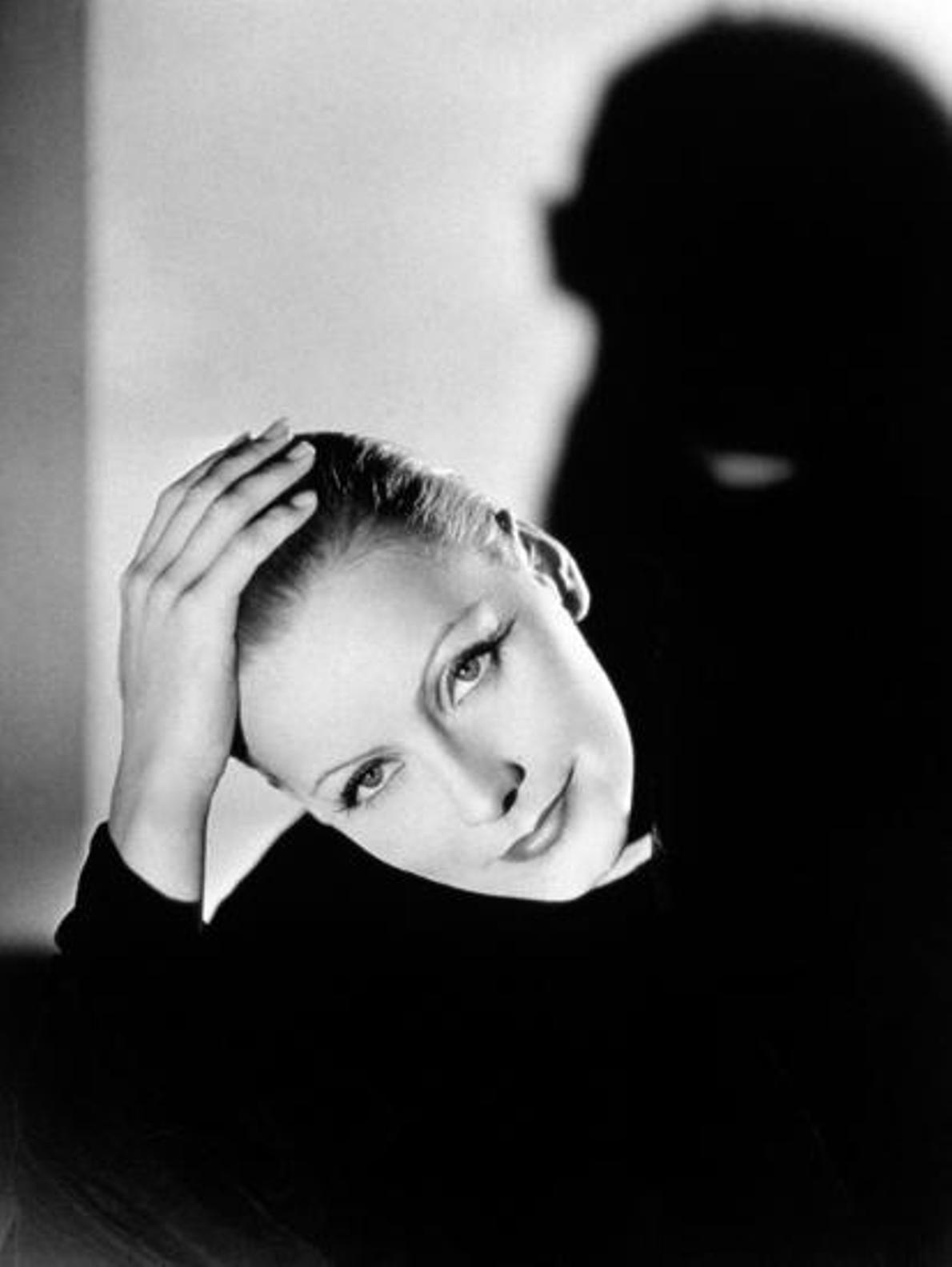
%20of%20b.inglese.png) MAY 30, 2021
MAY 30, 2021of Maria Anna Avveduto
GRETA GARBO
The story of Greta Garbo known by all
as "the Divine"
Greta Lovisa Gustafsson, real name of the famous Greta Garbo, was born in
Stockholm, Sweden on September 18, 1905 and died in New York on April 15,
1990 as an American citizen.
Greta Garbo was and still is one of the most famous actresses in the history
of world cinema.
Greta for her mysterious charm was named "La Divina".
Greta began her career as an actress in Sweden but later she was hired by
Metro-Goldwyn-Mayer of which she immediately became the leading actress
between the twenties and the forties, achieving enormous success both in the
silent and silent era. of the sound.
Thanks to her talent and her charisma, she was appreciated in films that
became classic cinema such as Grand Hotel of 1932, Queen Christina of 1933
and Anna Karenina of 1935.
Greta Garbo has seduced generations and generations of spectators, becoming
one of the most famous icons of the Hollywood star system.
Garbo had four Academy Award nominations and received one for her career in
1955 after her retirement ten years earlier.
The myth of her grew in contrast with that of another great diva Marlene
Dietrich, star of a competing film company who helped create an alleged
rivalry between the two.
The American Film Institute has placed Garbo in fifth place among the
greatest stars in the history of cinema.
Greta was born in 1905 in Södermalm, a popular district of Stockholm, to a
family of modest origins.
Her father Karl Alfred Gustafsson worked as a garbage man and her mother
Anna Lovisa Karlsson was a farmer of Lapp origin.
Greta was the third of three children, the other siblings were Alva and Sven.
Greta, with a melancholy and solitary character, preferred to remain
secluded and fantasize rather than join her peers to play.
The only leisure time she allowed herself was playing theater.
Garbo disguised herself in disused clothes, put on make-up and organized
personal shows.
In 1920, still fifteen, when her father died due to the Spanish flu epidemic,
she had to drop out of school to help support the family.
Garbo first worked in a barber shop that she soon abandoned due to the
constant advances she received from customers, and then as a clerk at PUB
and in the famous Stockholm department stores.
She soon she was noticed for her attractiveness of hers and she was asked to
pose as a model and to subsequently appear in two short commercials.
The short films attracted the attention of director Erik Arthur Petschle who
made her debut on the big screen in the 1922 comedy "Luffar-Petter".
These experiences convinced Garbo to seriously consider the way of acting.
By passing a selection she managed to win a scholarship to the Stockholm
Academy of Direction and shortly after she was called to audition with the
forty-year-old Finnish director Mauritz Stiller.
At the time of their meeting Greta Garbo was eighteen years old and the
director at that time already enjoyed a certain notoriety and was considered
an innovator of the cinematographic technique.
The artist was for a long time Garbo's mentor and pygmalion, as well as a
reserved and precious friend of her in the first years of her career.
It was at this point in her life that Greta Lovisa Gustafsson, on Stiller's
advice and requesting the Ministry of the Interior, decided to change her
name to Greta Garbo, inspired by that of Bethlen Gábor, a Hungarian
sovereign of the 17th century.
Even her look underwent progressive changes, dressing in her free time
comfortably and in a very informal way, also inventing the 'Garbo style'
characterized by an androgynous clothing with masculine cut jackets,
trousers, shirt and tie, managing to impose an innovative and at the same
time sensual image.
In March 1924 the film "The Legend of Gösta Berling" was presented in
Stockholm, which was appreciated by the public but was crushed by critics
and Stiller, who was the director, decided to re-present it in Berlin where
it recorded an unconditional success.
In the German city Greta became acquainted with the director Georg Wilhelm
Pabst who offered her a part in the film "The Joyless Way" of 1925, a film
that will prove to be a classic of cinematography and will allow Garbo to
launch towards a Hollywood future with a contract at MGM.
The producer Louis B. Mayer was in fact in Berlin looking for new talents
and on the advice of the Swedish director Sjöström already active in
Hollywood, he proposed a contract to Stiller who, however, would not have
left without Greta Garbo.
Mayer would have also declined the request but after a private viewing of
the film it seems he declared that he would have immediately taken the
actress but not the director.
Although she did not speak English, Garbo left for the United States with
pygmalion director Mauritz Stiller.
She expected to find Stiller as the director of her first film in Hollywood
but the 1926 film "The Creek" which is based on a short story by Spanish
writer Vicente Blasco Ibáñez, was instead directed by Monta Bell.
Although the film had not convinced the critics, all the attention was
focused on this new European actress so much so that the producer Irving
Thalberg immediately proposed similar roles to her.
Joys and sorrows alternated for a long time in the story of a woman and an
actress of La Garbo who often wrote to her Swedish friends that she felt
alone and bothered by the clamor of celebrity, by the incursions of
journalists and photographers into her private life and that she was unhappy
with the quality of his first films shot
The actress would have liked to play the part of Joan of Arc but his
expectations of getting roles that fit her personality were repeatedly
discouraged by MGM.
The actress's success was also due to the charm of her face beautifully
illuminated by director of photography William H. Daniels.
The actress herself claimed that he was always there in the films she worked
in to guarantee her success on the screen.
Garbo also began to make other claims: she did not want visitors on the set
and she demanded screens so as not to be disturbed by the workers.
She also began to ask for a higher salary with each new film.
All of her requests were always accepted by the executives of MGM except for
one of her: she had to wait four years and play seven more silent films
before being employed in a sound film.
The production company, aware of the actress's strong Swedish accent, did
not want to risk losing the star who guaranteed the highest revenues: in
fact, many actors and actresses had failed to switch from silent to sound.
Eventually they found a story to suit her in which she played a girl of
Swedish descent.
In the 1930 film "Anna Christie", Greta Garbo was finally able to voice her
characters for the first time in a film.
Her first line was addressed to a bartender: "Gimme a whiskey, ginger ale on
the side, and don't be stingy, baby!" which translated into Italian is "Give
me a whiskey, ginger ale aside, and don't be stingy, friend!".
The magazines of the time did not fail to greet the event enthusiastically,
with the headline in large letters: "La Garbo speaks".
In 1950 Greta Garbo became a US citizen.
In cinematic environments there are many legends that have grown up together
with and around the figure of Greta Garbo. Much has been said about her
alleged idiosyncrasy in shooting in the presence of people not strictly
qualified as 'insiders', just as the pink press of all time has tirelessly
studied under the microscope the sexual tendencies and interpersonal
relationships of Miss Greta Garbo who for the photojournalist it was
possible to capture only in passing wrapped in a coat, large goggles and a
foular on the head to cover up.
A lot of talk in Hollywood was the love story that Garbo had with the
American actor John Gilbert, one of the stars of silent cinema.
Although she is sincerely attached to him, she the actress she did not
hesitate to leave him when he asked her to marry him. With the advent of
sound, Gilbert's film career had entered a crisis because his vocal timbre
was not adequate for the spoken films but Greta did not abandon him. She
imposed him on director Rouben Mamoulian in 1933 for a supporting role in
the film "Queen Christina" which proved to be a huge box office success.
During the thirties the actress lived another important sentimental story
with the composer Leopold Stokowsky crowned by a romantic getaway in 1938 in
Ravello on the Amalfi coast.
Various biographies confirm the intense lesbian relationship between Garbo
and Mercedes de Acosta, an American poet of Spanish origin, considered one
of the "pioneers" of lesbianism in Hollywood circles.
Reserved to her excess, Garbo never forgave de Acosta for spreading
information about their sentimental history to the press and therefore ended
all relations with her.
In numerous letters the poet begged her forgiveness, but the actress did not
give in: de Acosta died alone and poor in 1968 in New York.
On the big screen Greta Garbo was also a spy, queen of the double game,
murderer, aristocrat, unfaithful wife, charmer and irresistible woman,
courtesan and prostitute.
Director Ernst Lubitsch glimpsed her further potential and in 1938 made her
play the role of the protagonist of a hilarious comedy "Ninotchka" in which
the diva demonstrated unsuspected skills as a brilliant actress and where
for the first time on the screen she was seen laughing. .
After the disappointment for the unexpected and sensational failure of the
1941 film "Don't betray me", at the age of 36 Garbo decided to retire
permanently from the stage and for the rest of her existence she always
escaped notoriety.
About her Her last interviews in 1928 granted to the writer Rilla Page
Palmborg and in 1929 granted to the reporter of the New York Times Mordaunt
Hall.
In 1949 some producers contacted her to play the melancholy ex diva of the
silent Norma Desmond in "Sunset Boulevard", but the actress, now retired for
several years, did not even consider the proposal and so the part of her
went to Gloria Swanson.
Variety magazine in 1950 named Garbo the best actress of the first fifty
years of the century.
In 1954 she was awarded an Academy Award for Lifetime Achievement and as
Best Actress she had been nominated four times by the Academy Award for Best
Actress with "Anna Christie" in 1930, with "Romanzo" again in 1930, with
"Margherita Gauthier" in 1937 and with "Ninotchka" in 1939, without ever
winning it.
Greta Garbo established her residence in New York in a luxurious apartment
whose walls hung some paintings by Renoir, one of her favorite painters.
From retiring from the scene until her death, which took place at the
Medical Center in Manhattan on Easter 1990, the actress led an absolutely
reserved life trying as much as possible to avoid journalists and
photojournalists, remaining flanked only by her niece and relatives. .
Garbo still belongs to the myth and the collective imagination.
Today Greta Garbo rests in the Skogskyrkogården cemetery in Stockholm,
Sweden.
Numerous pieces of music are inspired by Greta Garbo, including the song
"Just Like Greta" contained in the album "Magic Time" by Van Morrison; she
was mentioned in the track "My Name Is Jack" on Manfred Mann's album "Mannerisms";
in the song "Roman Holidays" by Matia Bazar; in the song
"Vogue" the first single from Madonna's album "I'm Breathless" and the song
"Bette Davis Eyes".
But there are also cinematic citations as in Sidney Lumet's 1984 film "Looking
for Garbo", in which her character was played by Betty Comden.
Among the films played by Greta Garbo we remember her early short films: "Herr
och fru Stockholm" by Ragnar Ring from 1920, "En lyckoriddare" by John W.
Brunius from 1921 and in "Konsum Stockholm Promo" by Ragnar Ring from 1921.
; among the films: "Luffar-Petter" by Erik A. Petscheler from 1922, "Kärlekens
ögon" by John W. Brunius from 1923,
"The Knights of Ekebu" by Mauritz Stiller from 1924,
"The joyless way" by Georg Wilhelm Pabst from 1925, "The torrent" by Monta
Bell from 1926, "The temptress" by Fred Niblo from 1926, "The flesh and the
devil" by Clarence Brown from 1926, "Anna Karenina" by Edmund Goulding from
1927, "The Divine Woman" by Victor Sjöström from 1928, "The Mysterious
Woman" by Fred Niblo from 1928, "The Destiny" by Clarence Brown from 1928,
"Wild Orchid" by Sidney Franklin from 1929, "Woman who loves "by John S.
Robertson of 1929," The Kiss "by Jacques Feyder of 1929," Anna Christie "by
Clarence Brown of 1930; Clarence Brown's "Novel" from 1930, Jacques Feyder's
"Anna Christie" from 1931, Clarence Brown's "Model" from 1931, Robert Z.
Leonard's "Courtesan" from 1931, George Fitzmaurice's "Mata Hari" from 1931,
"Grand Hotel" by Edmund Goulding from 1932, "As you want me" by George
Fitzmaurice from 1932, "Queen Christina" by Rouben Mamoulian from 1933, "The
Painted Veil" by Richard Boleslawski from 1934, "Anna Karenina" by Clarence
Brown from 1935, "Margherita Gauthier" by George Cukor from 1936,
Clarence Brown's "Maria Walewska" from 1937, Ernst Lubitsch's "Ninotchka"
from 1939 and George Cukor's "Don't Betray Me with Me" from 1941.
Grata Garbo received the honor of the same on Hollwydood Boulevard and the
honor of "Commander of the Order of the Polar Star".


